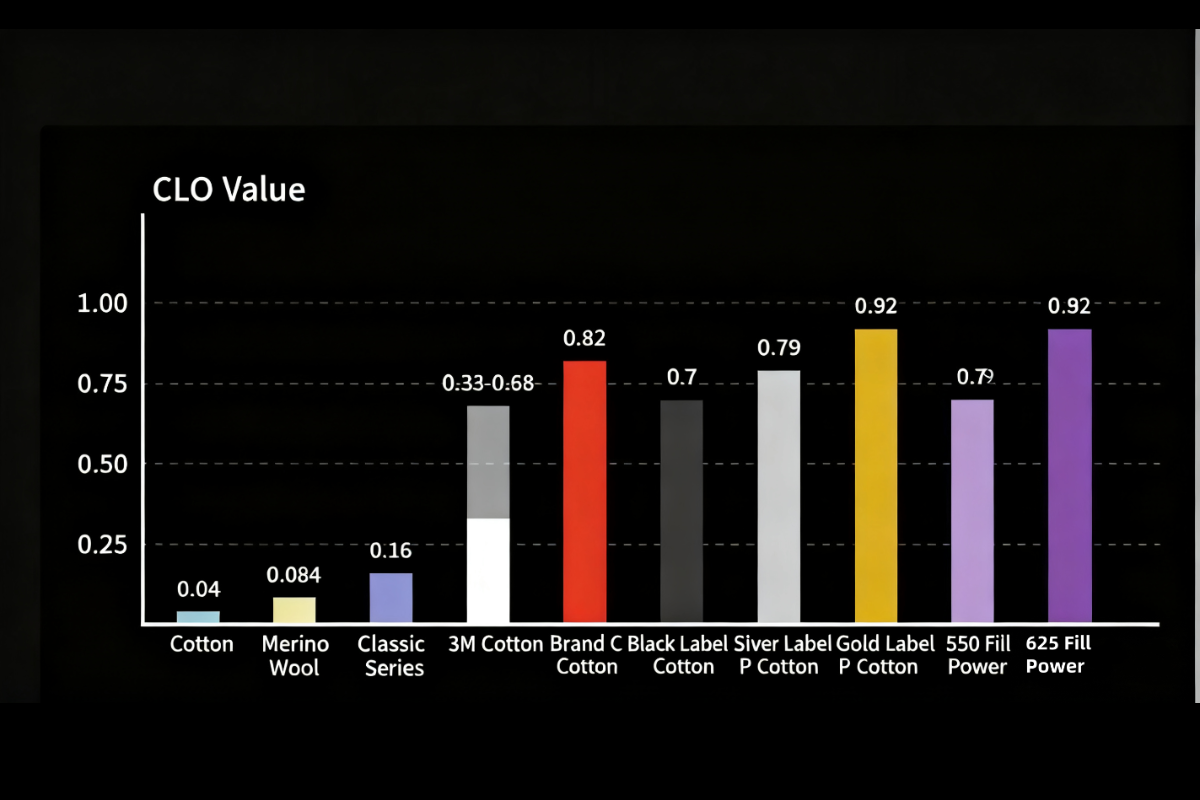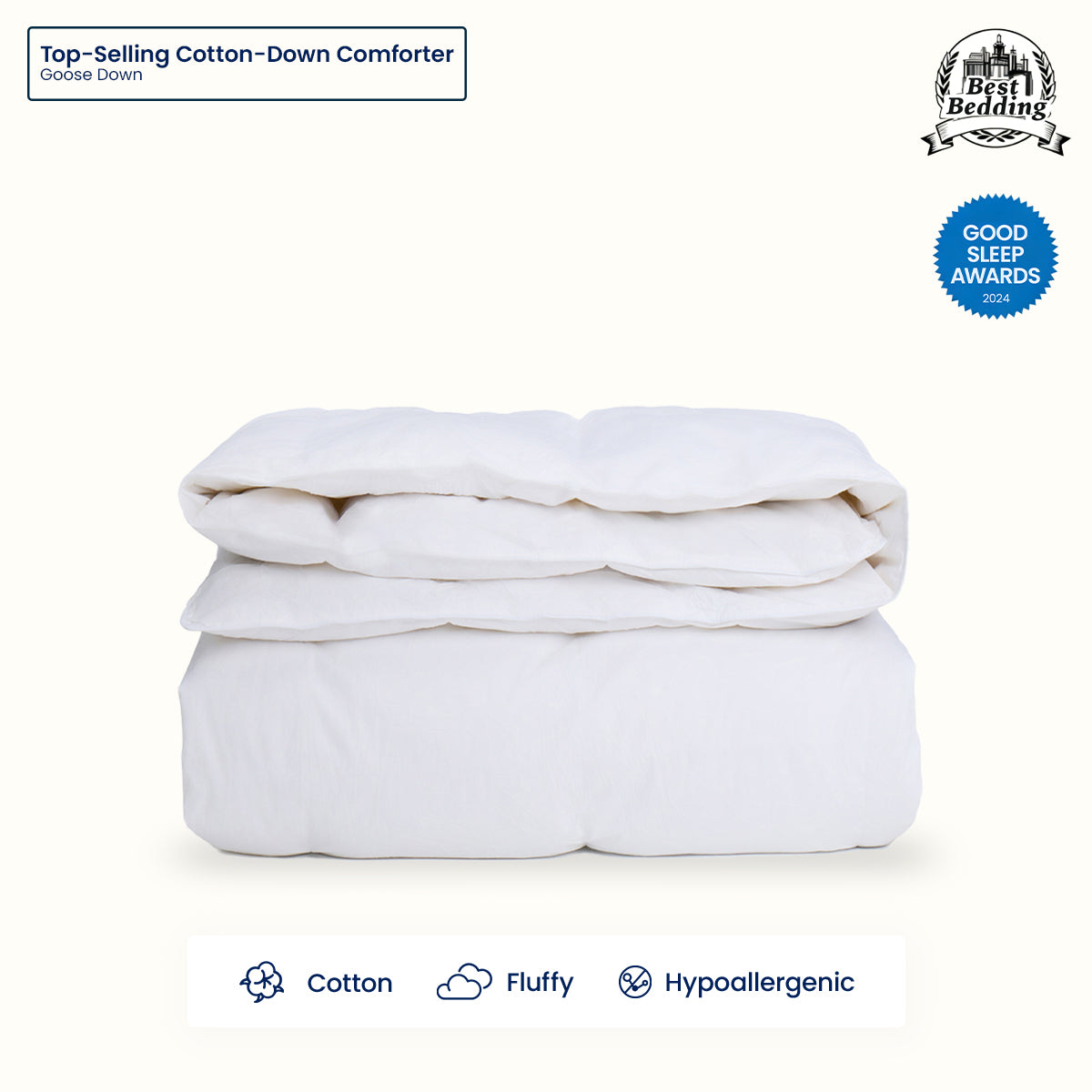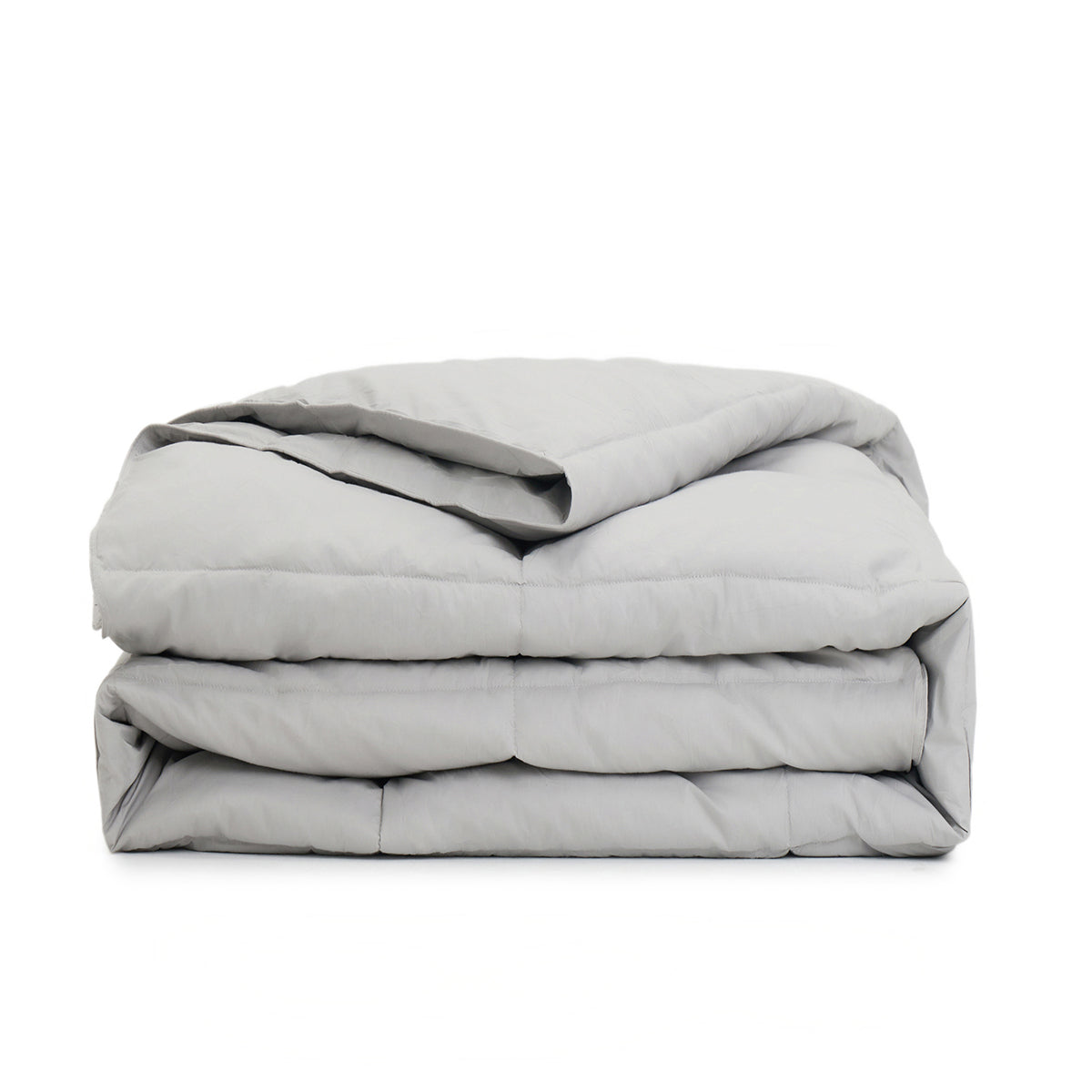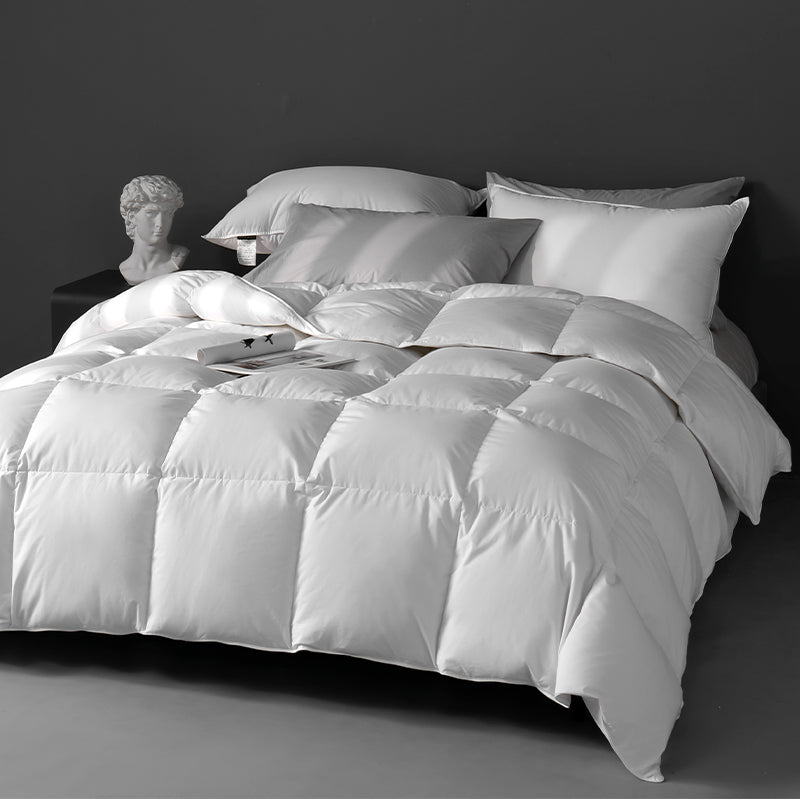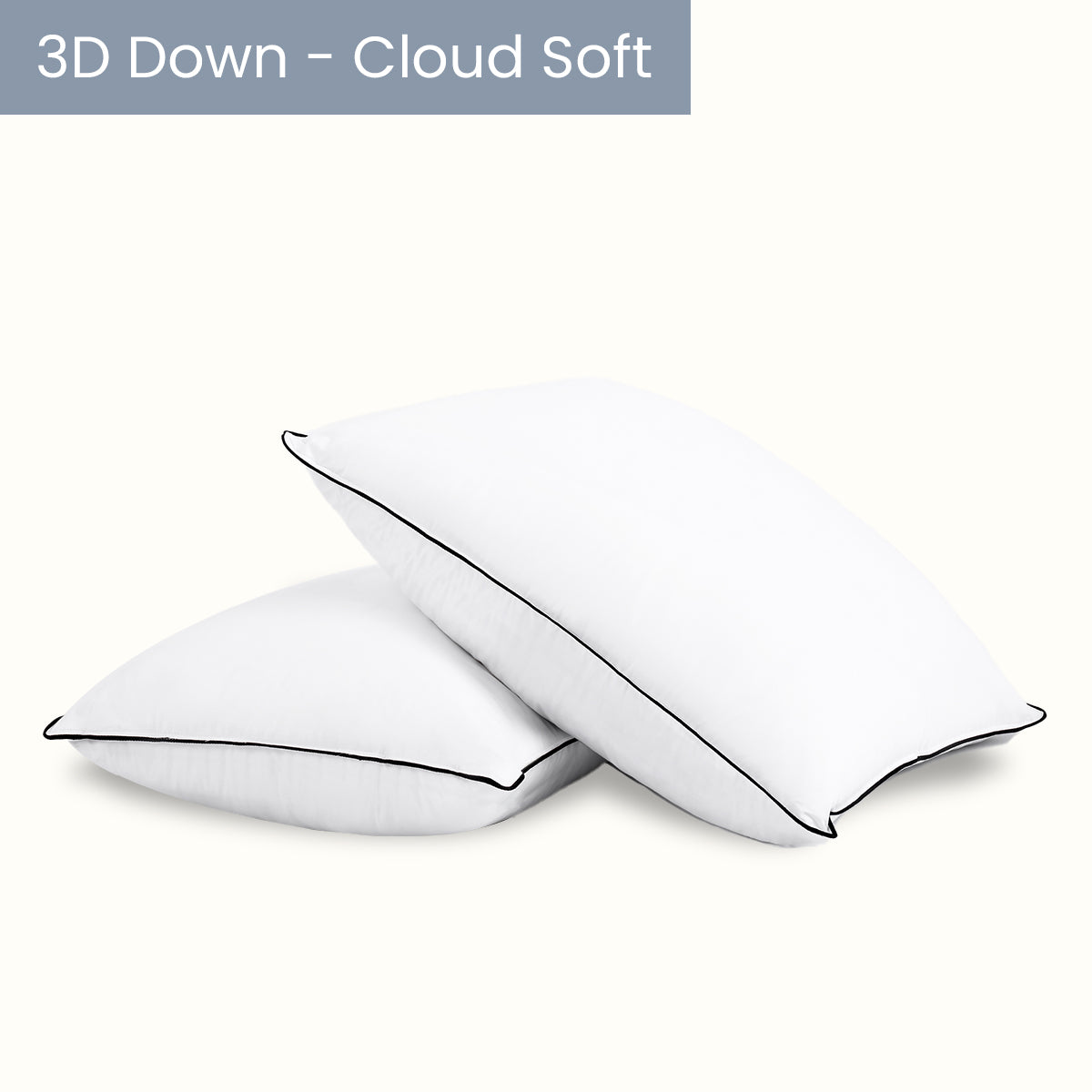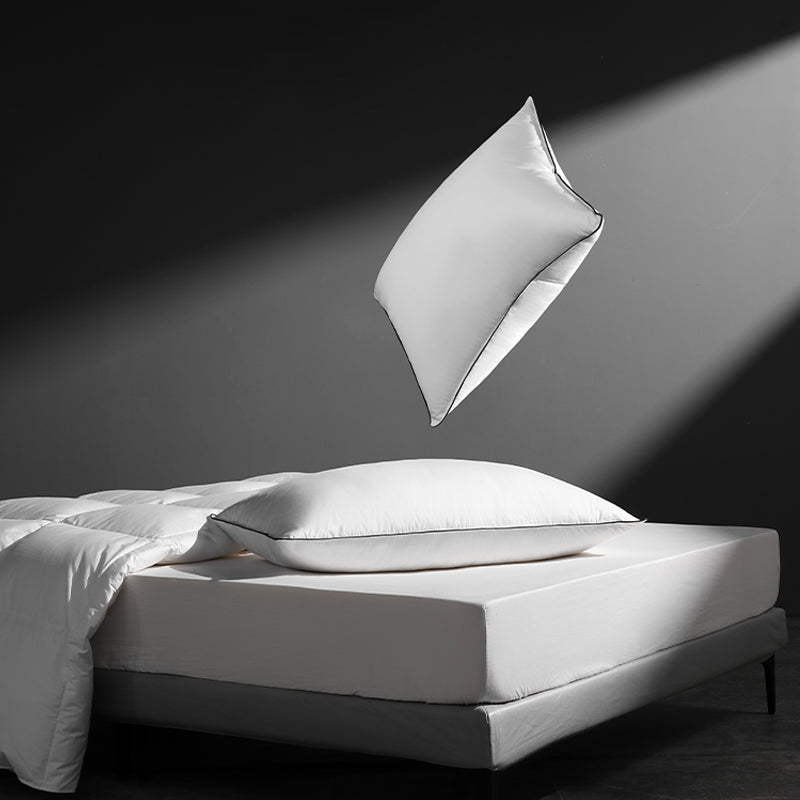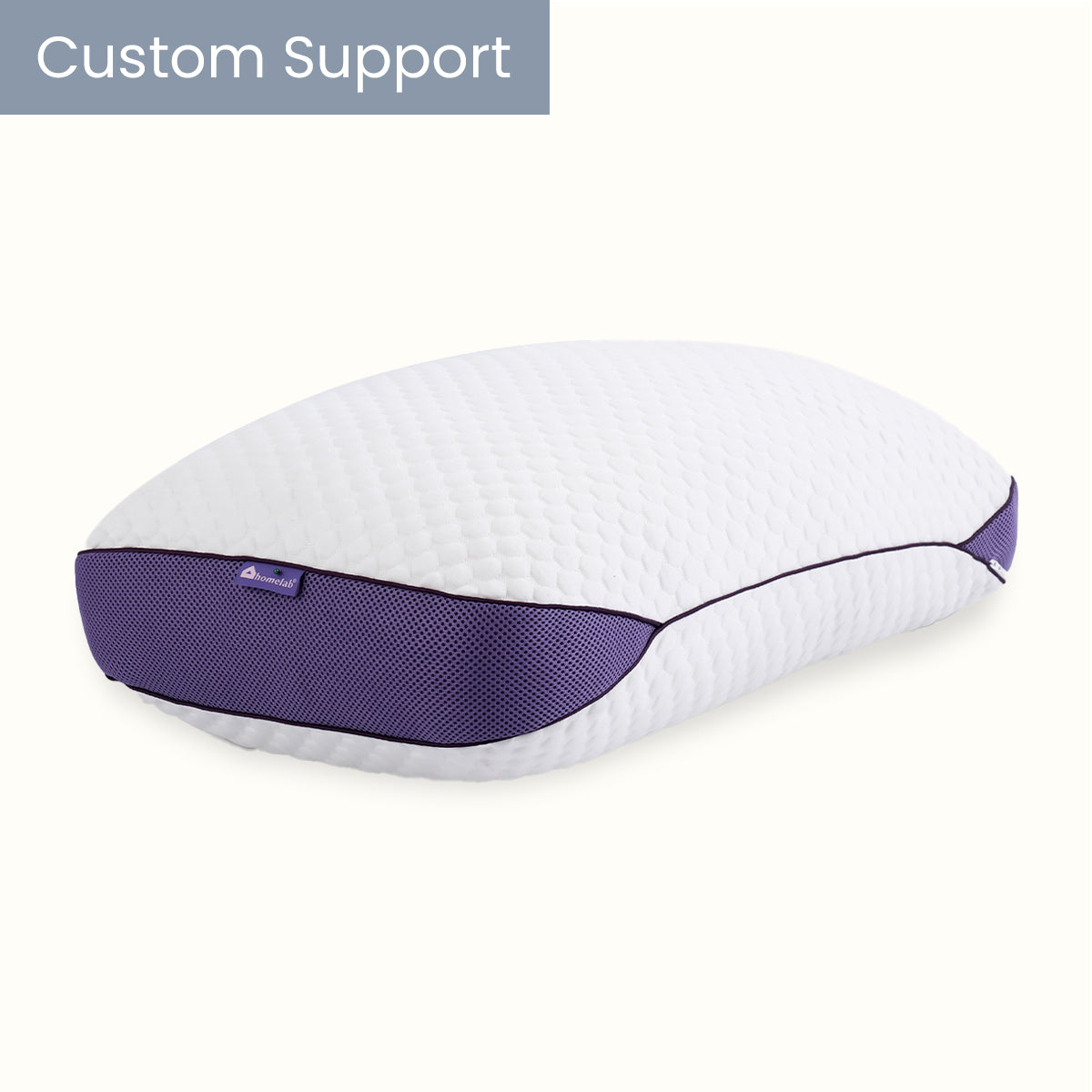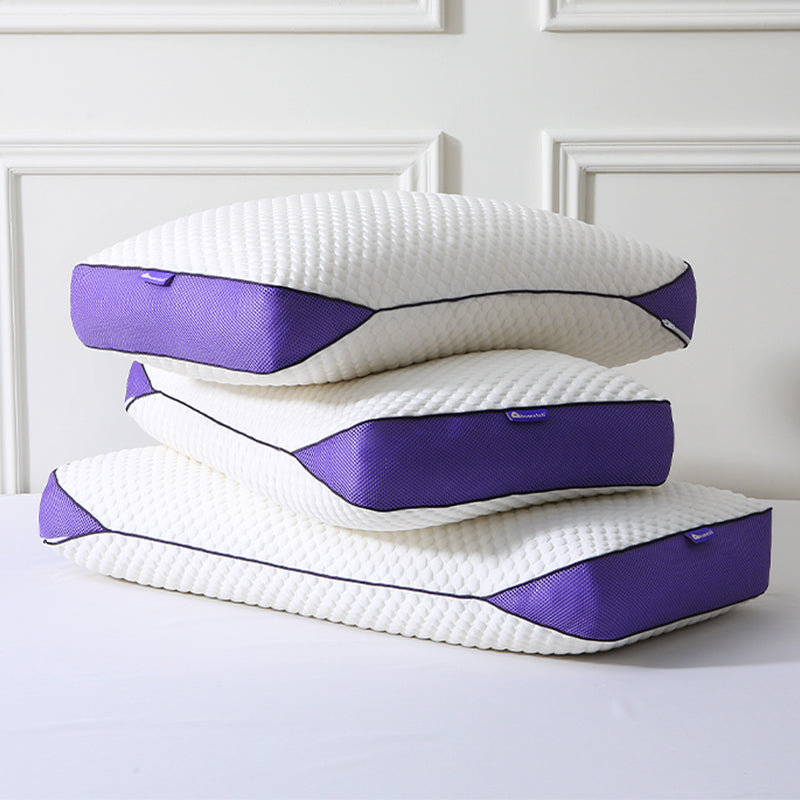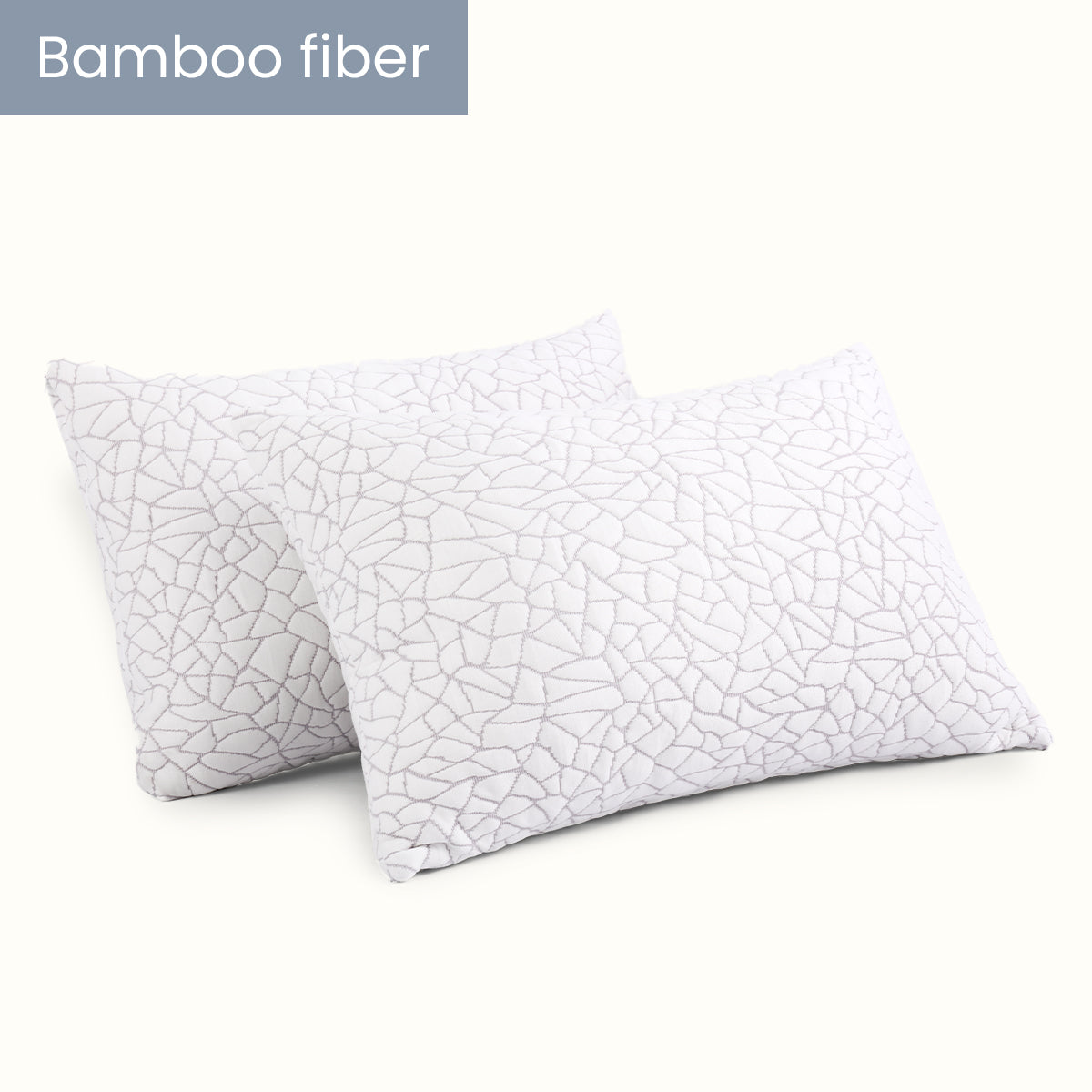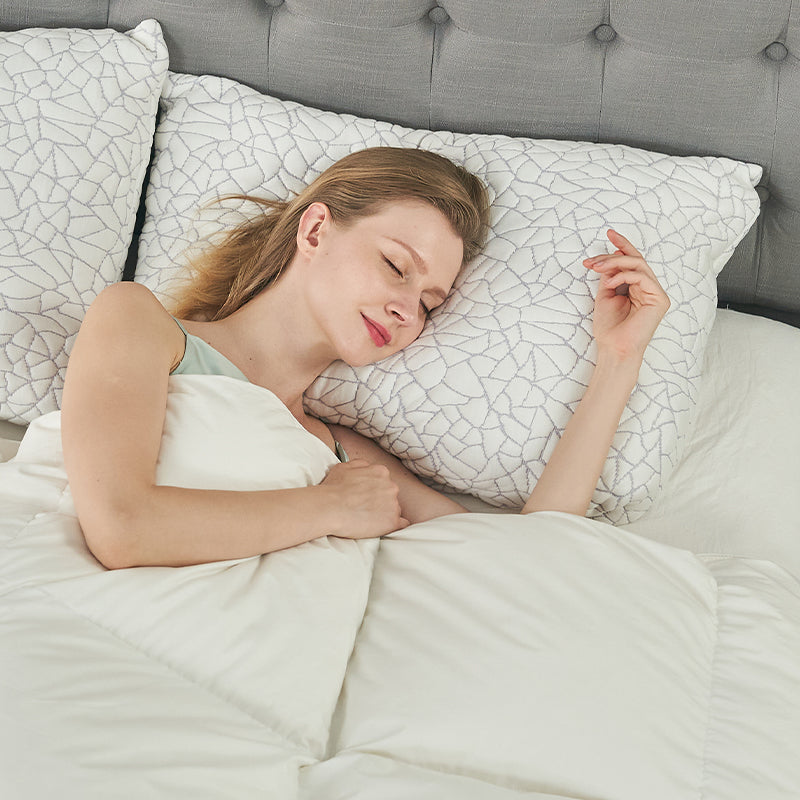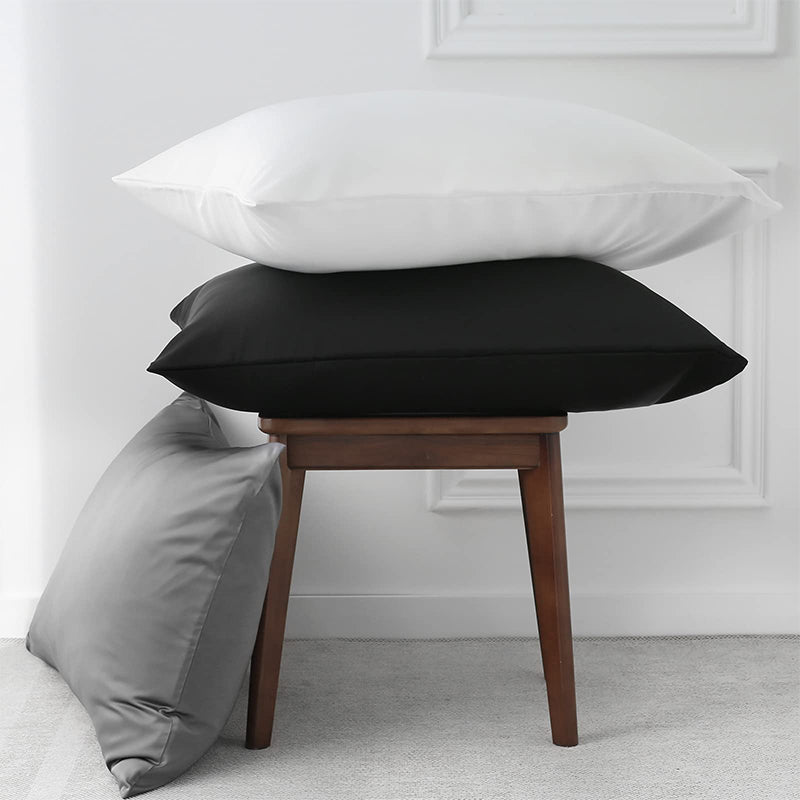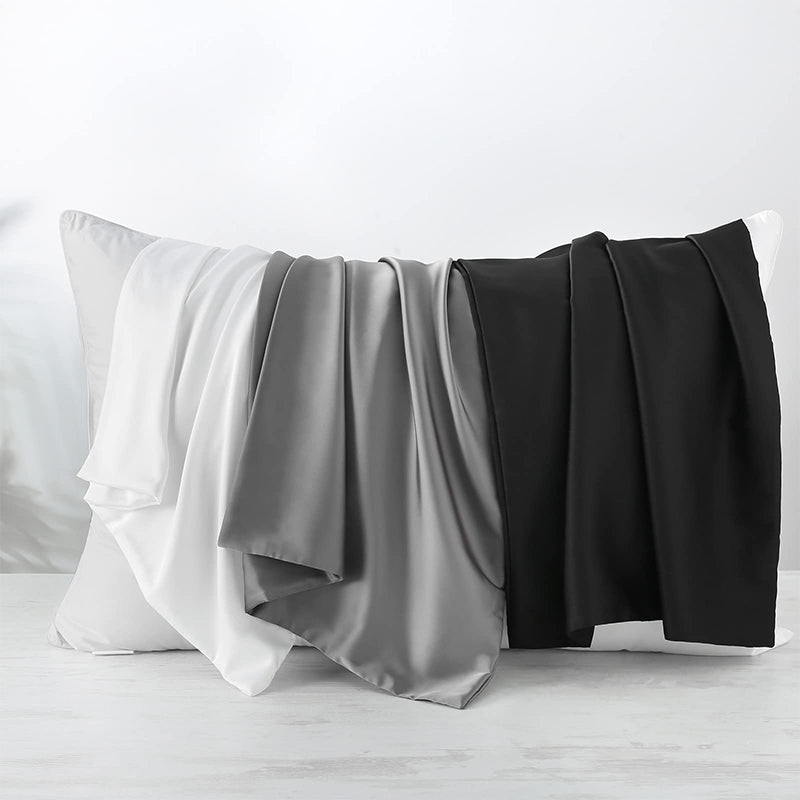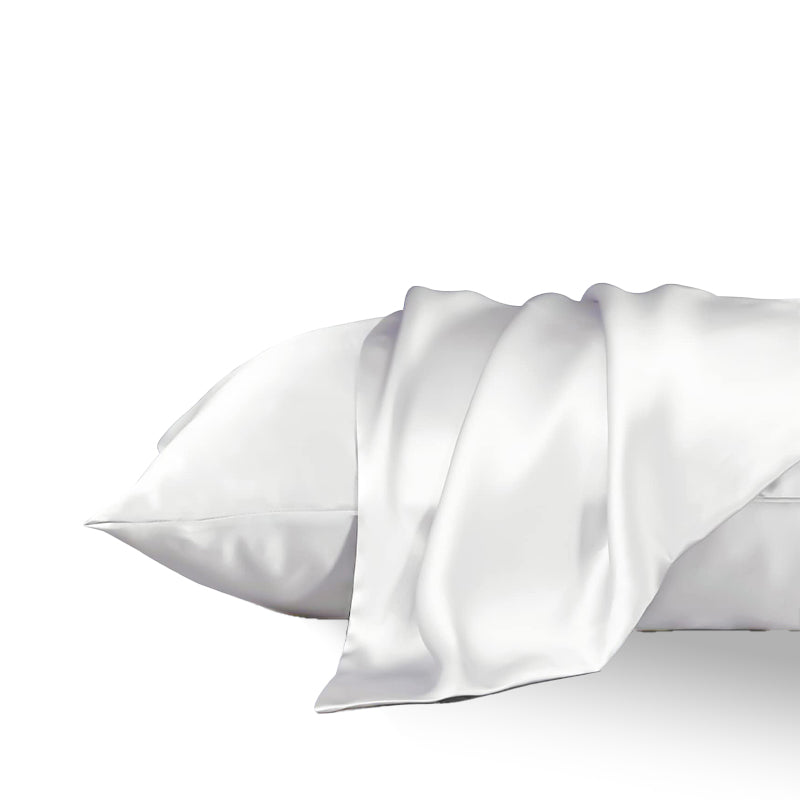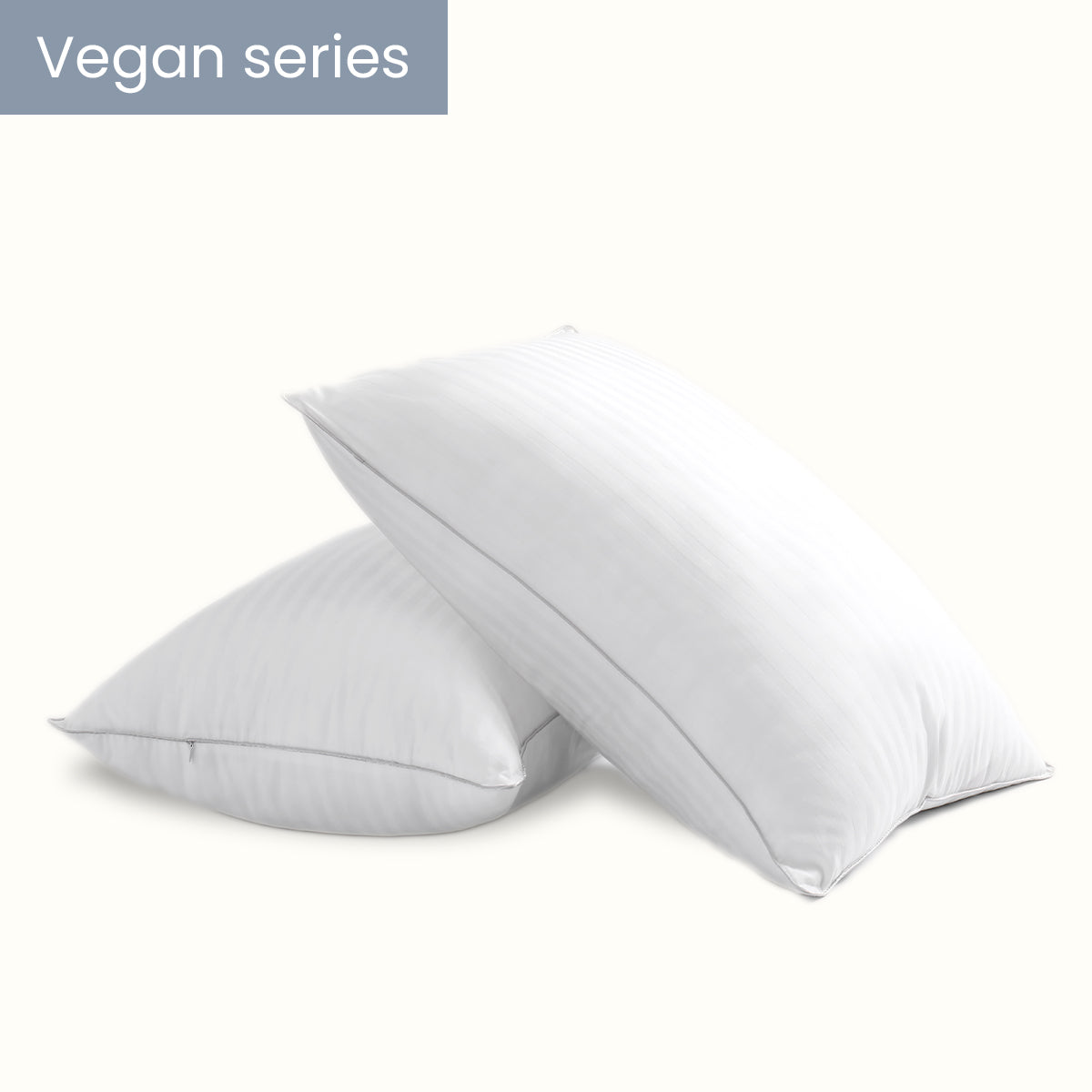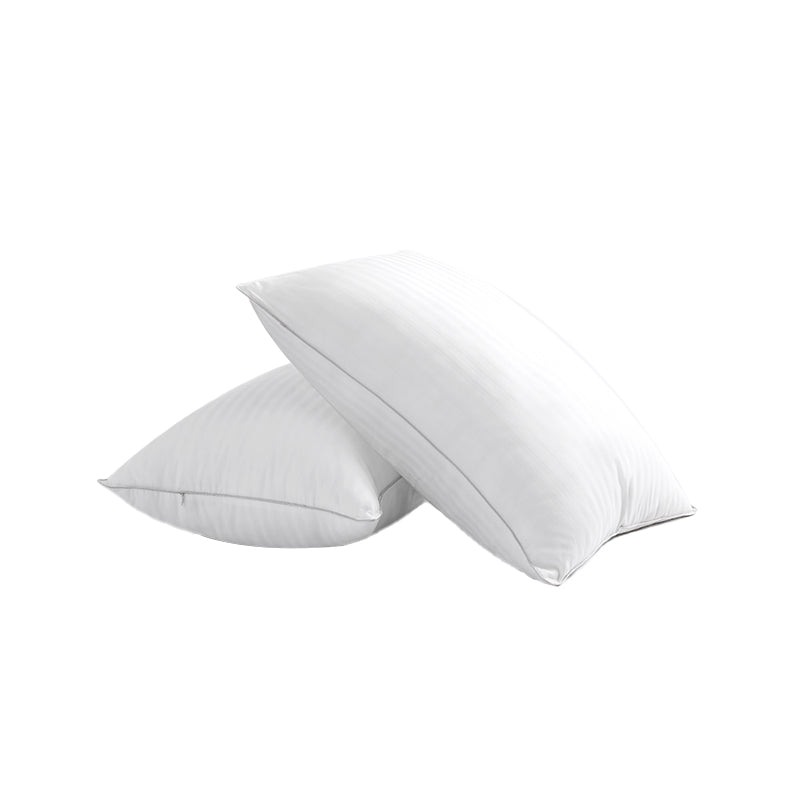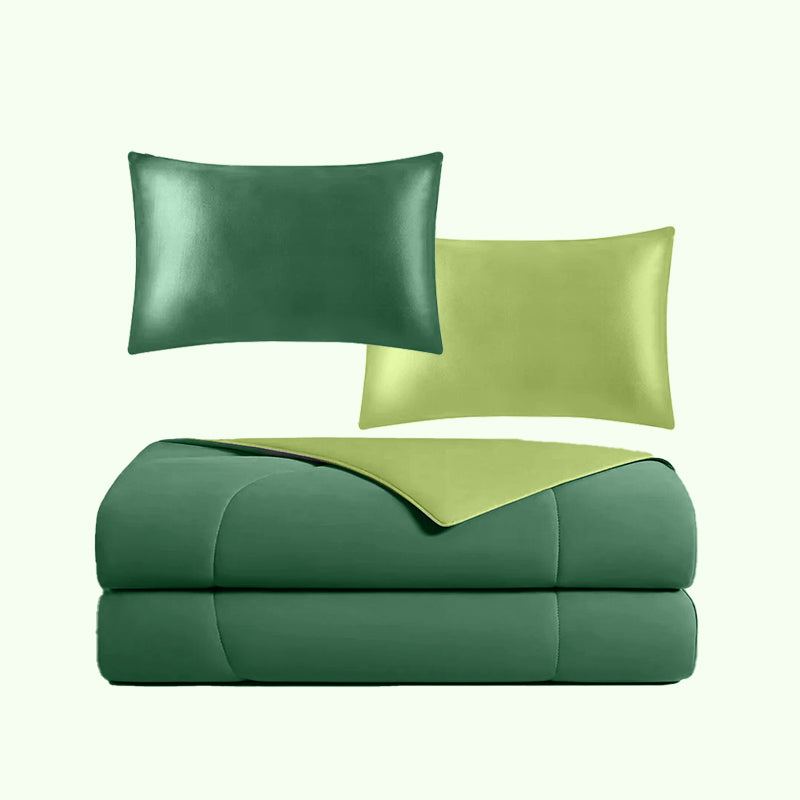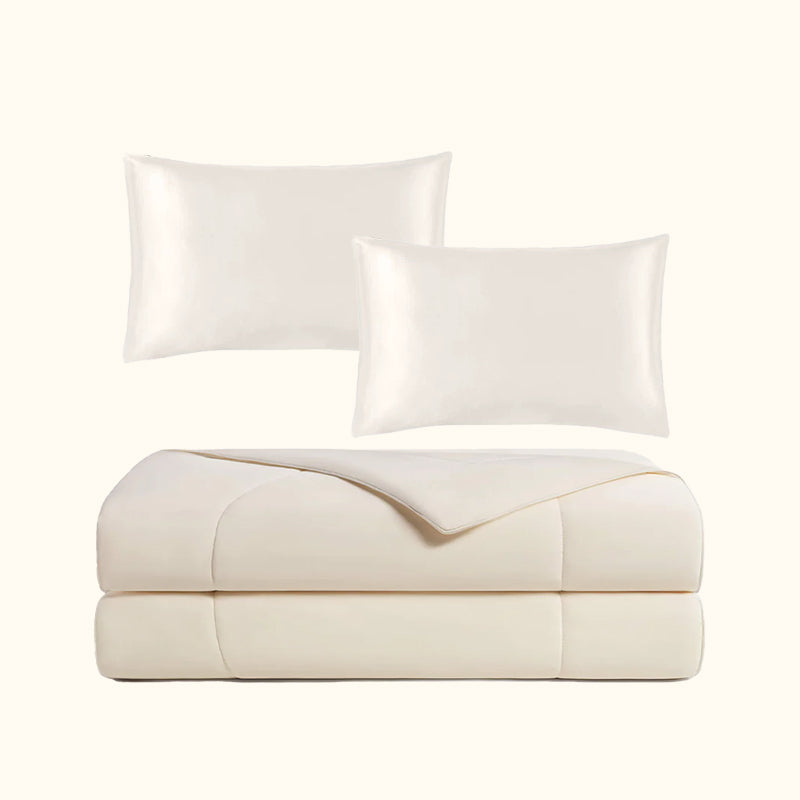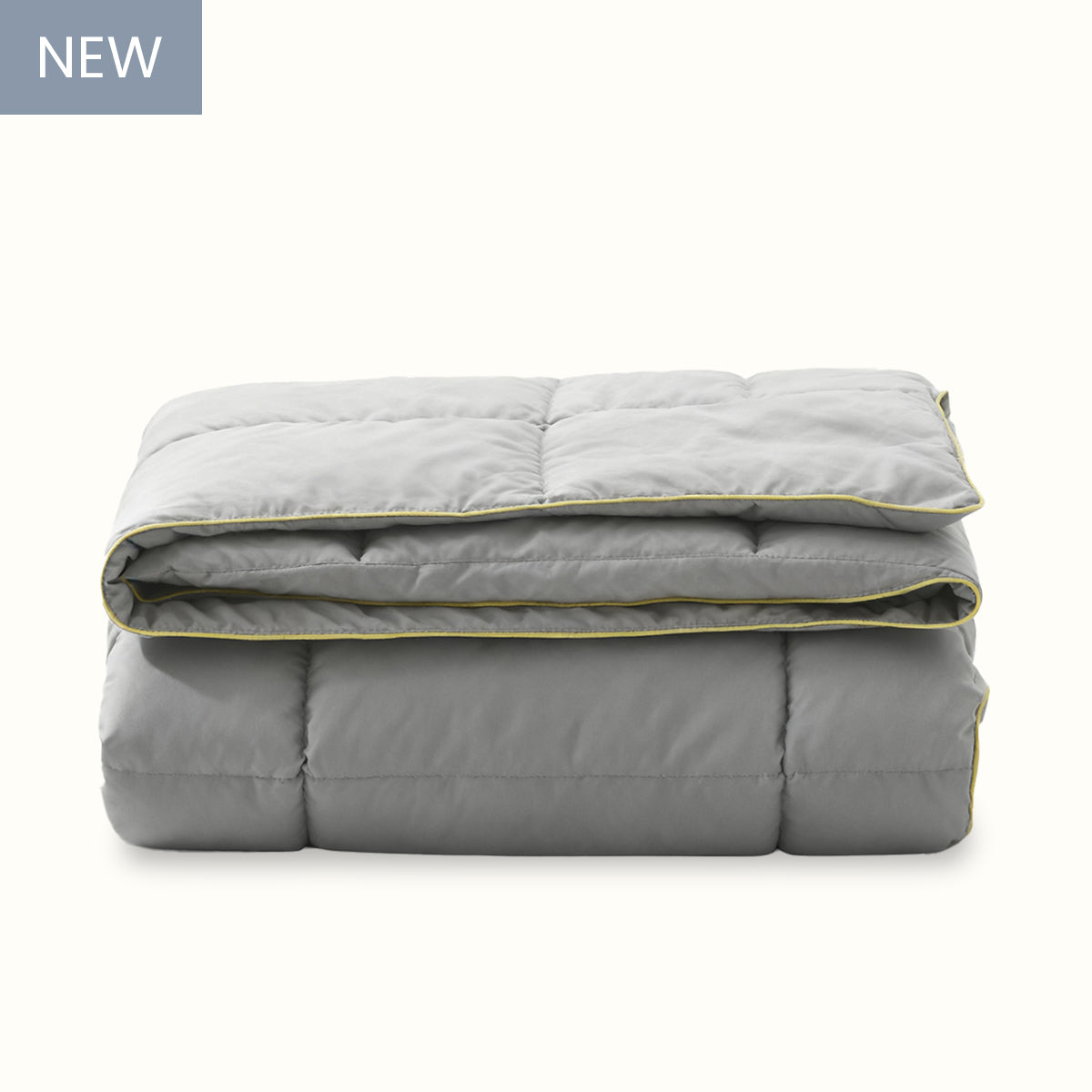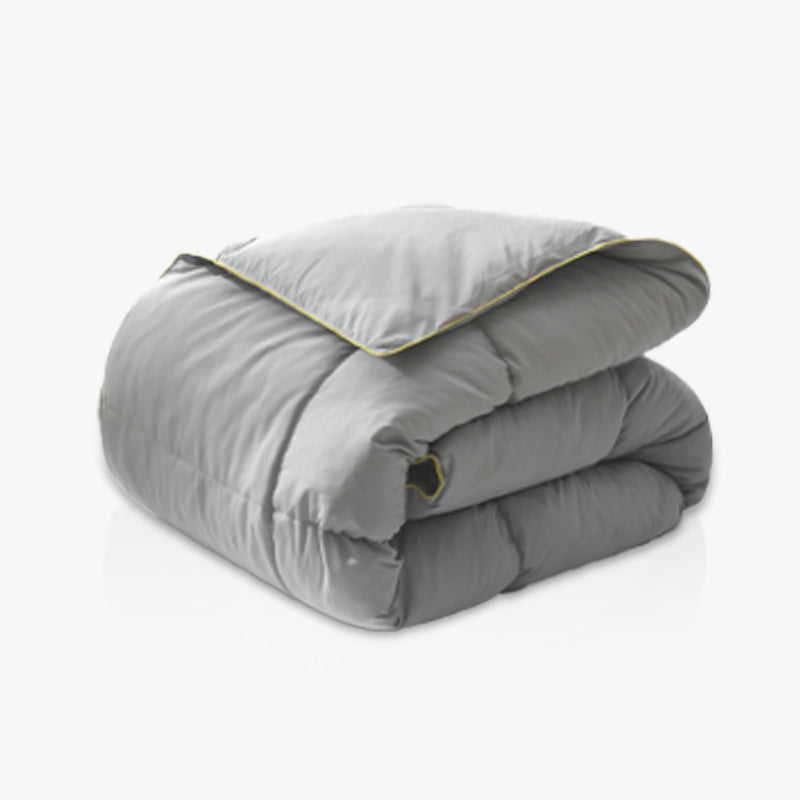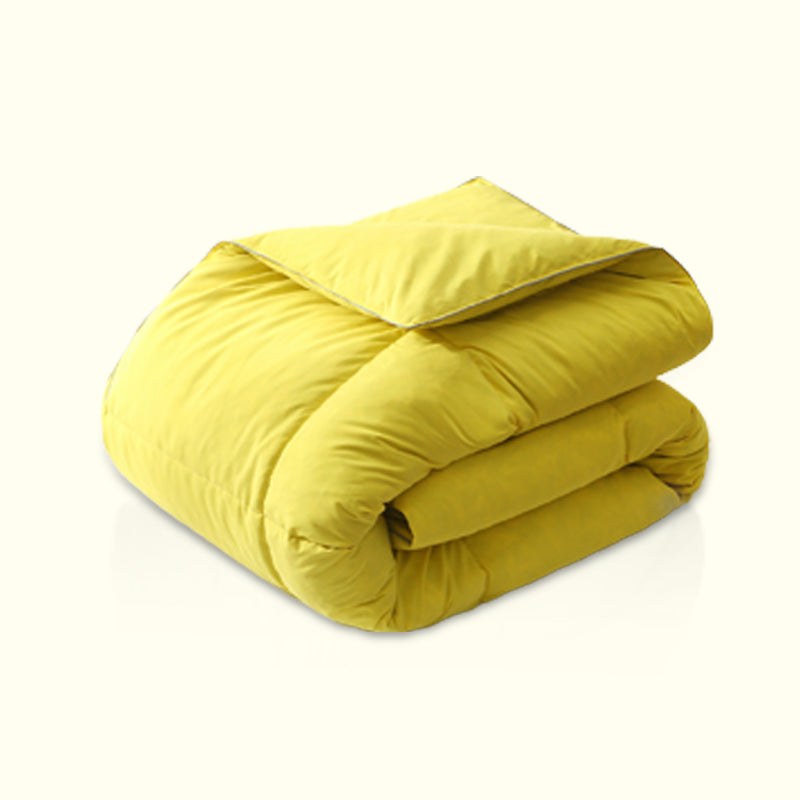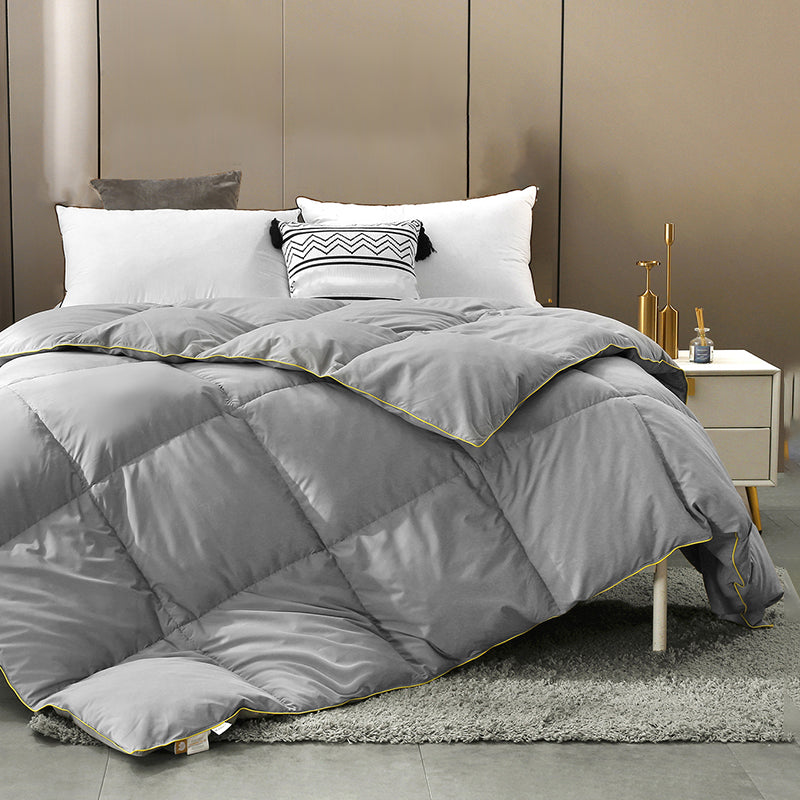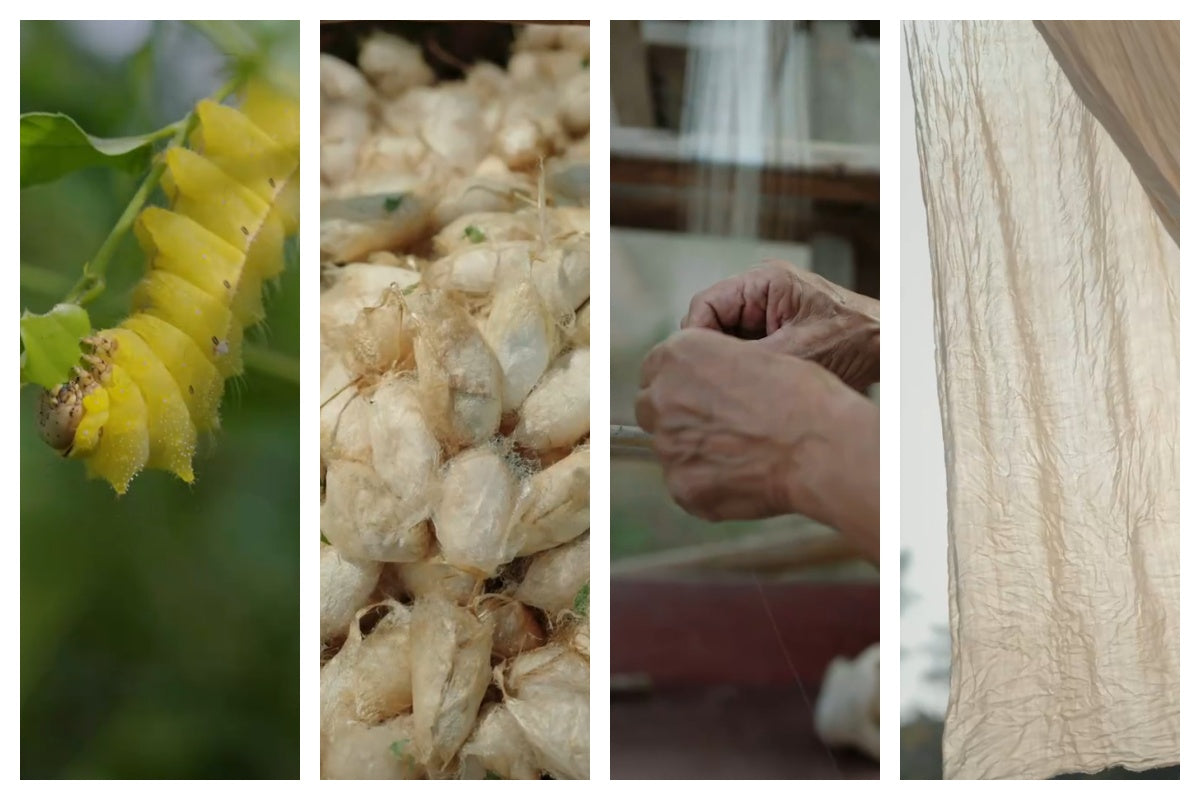Wenn der eisige Wind pfeift und es überall klirrt, sind Daunendecken unverzichtbar, um nachts warm zu bleiben. In letzter Zeit hört man häufiger von „modernen Daunendecken“ oder „hochwertigen Daunendecken“. Was macht diese Decken so besonders? Wir lüften ihre cleveren technischen Geheimnisse.
Traditionelle Daunendecken: Die Grundlagen der Wärme
Eine traditionelle Daunendecke ist mit Daunen gefüllt (den weichen, flauschigen Fasern von Enten oder Gänsen). Ihre außergewöhnliche Wärmeleistung beruht auf der einzigartigen Struktur der Daunen. Daunen sehen aus wie winzige, flauschige Kugeln – jede einzelne besteht aus noch kleineren, sich überlappenden Schuppen. Diese Schuppen bilden winzige Zwischenräume, in denen viel Luft eingeschlossen wird.

Und hier die wissenschaftliche Erklärung: Luft lässt Wärme nicht so leicht durch. Wärme breitet sich auf drei Arten aus: durch Kontakt (Wärmeleitung), durch bewegte Luft (Konvektion) und durch Wärmestrahlung. Die stehende Luft in der Decke blockiert alle drei Wege. Sie verhindert, dass Körperwärme entweicht und kalte Luft eindringt.
Das entscheidende Wort ist Bauschkraft – sie gibt an, wie warm eine Daunendecke ist. Je höher die Bauschkraft, desto mehr Luft kann die Daunenfüllung einschließen und desto wärmer ist die Decke. Die meisten Daunendecken sind mit Enten- oder Gänsedaunen gefüllt. Gänsedaunen sind in der Regel besser: Ihre Fasern sind länger und feiner, wodurch sie flauschiger, leichter und wärmer als Entendaunen sind.
Doch herkömmliche Daunendecken haben ihre Nachteile. Manche riechen nach Federn, und mit der Zeit können Daunen durch die Nähte austreten. Da die Menschen Wert auf Komfort und Funktionalität legen, wurden „moderne Daunendecken“ entwickelt – sie sind nicht nur warm, sondern auch gesünder und einfacher in der Handhabung.

Technisch ausgefeilte Daunendecken: Wärme und Gesundheit in einem
Welche tollen Materialien werden für diese Bettdecken verwendet? Wie lösen sie die alten Probleme? Schauen wir uns die beliebtesten Arten an.
1. Daunendecken mit Ferninfrarotstrahlung: „Lebensspendende Strahlen“ für Wärme und Energie
Ferninfrarotstrahlen sind wie „lebensspendende Strahlen“ – sie sind Bestandteil des Sonnenlichts und dringen tief in die Haut ein. Sie fördern die Durchblutung, unterstützen die Körperfunktionen und stärken das Immunsystem. Diese Bettdecken enthalten Daunen mit Ferninfrarot-Wirkstoffen und bieten Ihnen so zwei Vorteile: Wärme und Wohlbefinden.
- Superwarm mit Wärmefunktion : Dank innovativer Technologie wurde die Daunenstruktur optimiert. Daunen und Infrarot-Materialien sorgen gemeinsam für ein angenehm warmes Bett die ganze Nacht – ohne plötzliche Kältebrücken.
- Weich und komfortabel für einen erholsamen Schlaf : Wir mischen Daunen und Baumwolle mit Infrarotfasern optimal. Dadurch wird die Bettdecke besonders flauschig und weich. Sie passt sich Ihrem Körper an, ohne sich schwer anzufühlen oder Schwitzen zu verursachen.
- Hält die Wärme länger drinnen : Die Baumwolle mit Ferninfrarotfasern wirkt wie ein „Hitzeschild“. Sie verhindert, dass Ihre Körperwärme entweicht und blockiert kalte Luft – ideal, wenn Sie leicht frieren.
- Nanotechnologie für langfristige Gesundheit : Die Ferninfrarot-Faserbaumwolle nutzt Nanotechnologie (minimale Partikel). Sie sendet kontinuierlich Ferninfrarotstrahlen aus, die die Funktion der kleinen Blutgefäße im Körper verbessern und Müdigkeit nach einem langen Tag lindern.
2. Graphen-Daunendecken: Intelligente Bettdecken, die „Ihre Temperatur kennen“

Graphen ist das dünnste Material der Erde – es besteht aus Kohlenstoffatomen und ist nur so dick wie ein einzelnes Atom. Die Atome sind eng miteinander verbunden, wodurch es sehr stabil ist. Es besitzt außerdem freie Elektronen, die Wärme und Elektrizität extrem schnell leiten – viel schneller als die meisten anderen Materialien. Wenn wir Graphen in Daunendecken einarbeiten, verändert sich das Wärmeempfinden.
- Nutzt Ihre Körperwärme wieder : Graphen fängt die Wärme ein, die Ihr Körper im Schlaf produziert. Es wandelt diese Wärme in Ferninfrarotstrahlen um und sendet sie an Sie zurück – so geht keine Wärme verloren.
- Keine kalten Stellen : Graphen verteilt die Wärme gleichmäßig über die gesamte Bettdecke. So gibt es keine kalten oder zu warmen Stellen im Bett.
- Stoppt Bakterien und unangenehme Gerüche : Die Struktur von Graphen tötet häufige schädliche Bakterien (wie E. coli oder Staphylococcus aureus) ab. Dadurch wird die Entstehung unangenehmer Gerüche verhindert – ideal für alle, die nachts schwitzen oder unangenehme Gerüche nicht mögen.
- Intelligente Temperaturregelung : Einige hochwertige Graphen-Bettdecken sind mit winzigen Nanotechnologie-Chips ausgestattet. Diese Chips erfassen, ob Ihrem Körper zu warm oder zu kalt ist. Sie signalisieren dem Graphen, weniger Wärme zu produzieren (wenn Ihnen warm ist) oder mehr Wärme (wenn Ihnen kalt ist) – es „kennt Ihre Temperatur“.
3. Wasserabweisende Daunendecken: Warm auch bei hoher Luftfeuchtigkeit
Traditionelle Daunendecken vertragen keine Feuchtigkeit. Natürliche Daunen besitzen eine dünne Ölschicht, die Wasser abweist. Dieses Öl wird jedoch abgewaschen, um unangenehme Gerüche zu beseitigen. Ohne das Öl verklumpen die Daunen im nassen Zustand und verlieren ihre Wärmeleistung. Wasserabweisende Daunendecken lösen dieses Problem mithilfe moderner Technologie:
- Stellt den „Wasserschutz“ wieder her : Wir verwenden spezielle Verfahren, um eine Art „Ölfilm“ auf die Daunen aufzutragen. Dabei kommen häufig Materialien wie Polyurethan oder Fluorkohlenstoffharz zum Einsatz. Diese Schicht hält die Daunen flauschig und macht sie wieder wasserabweisend.
- Verhindert das Eindringen von Wasser : Einige Bettdecken werden mit einer speziellen Imprägnierung versehen. Jede einzelne Daunenfaser erhält einen dünnen, wasserdichten Film. Dieser Film verhindert, dass Wasser (wie Schweiß oder feuchte Luft) in die Daunen eindringt.
- Atmungsaktiv, nicht stickig : Die wasserdichte Schicht hält nur flüssiges Wasser ab – sie blockiert nicht die Luft. So bleibt die Bettdecke atmungsaktiv und Sie fühlen sich weder heiß noch verschwitzt.
- Ideal für schwüle Tage : Perfekt für südliche Regionen (z. B. während der Regenzeit) oder nördliche Winter mit hoher Luftfeuchtigkeit. Selbst wenn die Bettdecke etwas feucht wird, trocknet sie schnell und hält warm.

4. Technische Baumwoll-Daunendecken: Eine hervorragende Alternative zu herkömmlichen Daunendecken
Neben natürlichen Daunen ist „technische Baumwolle“ (ein künstlich hergestelltes, wärmendes Material) mittlerweile eine beliebte Wahl für Bettdecken. Sie ist warm, strapazierfähig und umweltfreundlich – hier sind die gängigsten Arten:
|
Art von technischer Baumwolle
|
Woraus es besteht / Hauptmerkmale
|
Wie es Sie warm hält
|
Warum es großartig ist
|
|
PrimaLoft P-Baumwolle
 |
Synthetische Fasern, ursprünglich für militärische Ausrüstung entwickelt
|
Es schließt nicht nur Luft ein – es saugt Ihren Schweiß auf und wandelt ihn in Wärme um (wie „Schweiß zu Wärme“).
|
1. Ideal für kalte, feuchte Umgebungen. 2. Besonders warm: Der Wärmewert (Clo-Wert) beträgt 0,92 – das entspricht einer Daunenfüllung mit 625er Füllkraft. 3. Verklumpt nicht, auch nach mehrmaligem Waschen.
|
|
3M Thinsulate
 |
Ultradünne Fasern, die so gefertigt sind, dass sie „dünn, aber warm“ sind.
|
Die winzigen Fasern sind dicht verwebt. Sie schließen viel Luft ein, um den Wärmeverlust zu verhindern.
|
1. Nur 4 mm dünn – leicht und angenehm warm. 2. 1,5-mal wärmer als herkömmliche Daunen. Nimmt nur 1 % seines Eigengewichts an Wasser auf – hält auch im feuchten Zustand warm. 3. Leicht zu waschen und langlebig.
|
|
DuPont Sorona Bio-Down
 |
PTT (eine Art Kunststoff), 37 % aus Pflanzen (wie Mais)
|
Wir haben die Fasern so konzipiert, dass sie kleine Zwischenräume aufweisen. Diese Zwischenräume schließen Luft ein und halten Sie warm.
|
1. Umweltfreundlich – verwendet weniger erdölbasierte Materialien. 2. So flauschig, weich und warm wie gute Daunen. 3. Waschbar, kein Daunenverlust und ein guter Preis.
|
Von einfachen, warmen Bettdecken bis hin zu technologisch fortschrittlichen Modellen, die warm, gesund, intelligent und umweltfreundlich sind – diese neuen Daunendecken nutzen wissenschaftliche Erkenntnisse, um Ihren Bedürfnissen gerecht zu werden. Ob Sie in einer kalten nördlichen Region, einer feuchten südlichen leben oder einfach nur eine gesunde, pflegeleichte Bettdecke suchen – es gibt die perfekte, technologisch fortschrittliche Daunendecke für Sie.


